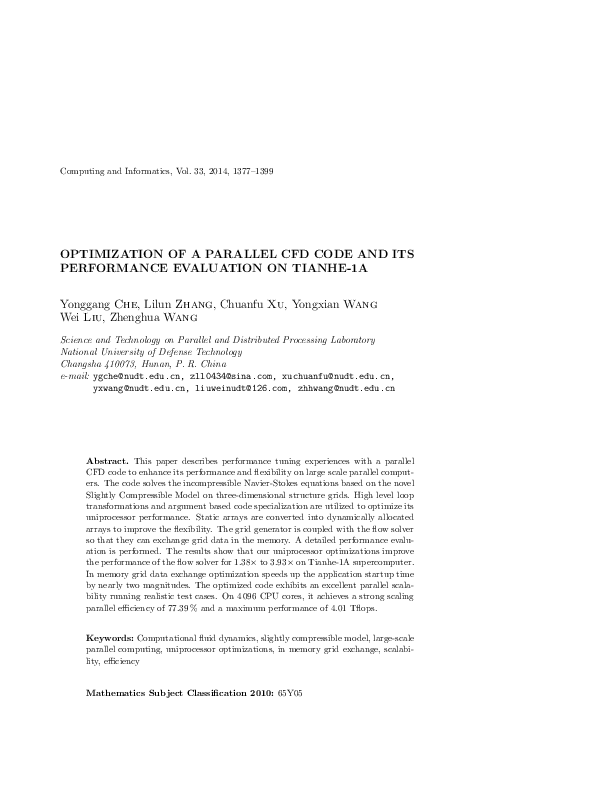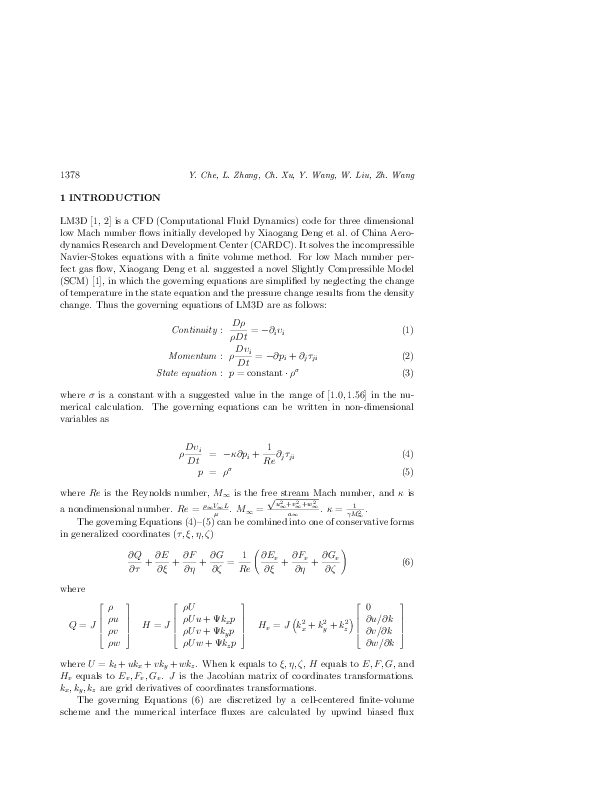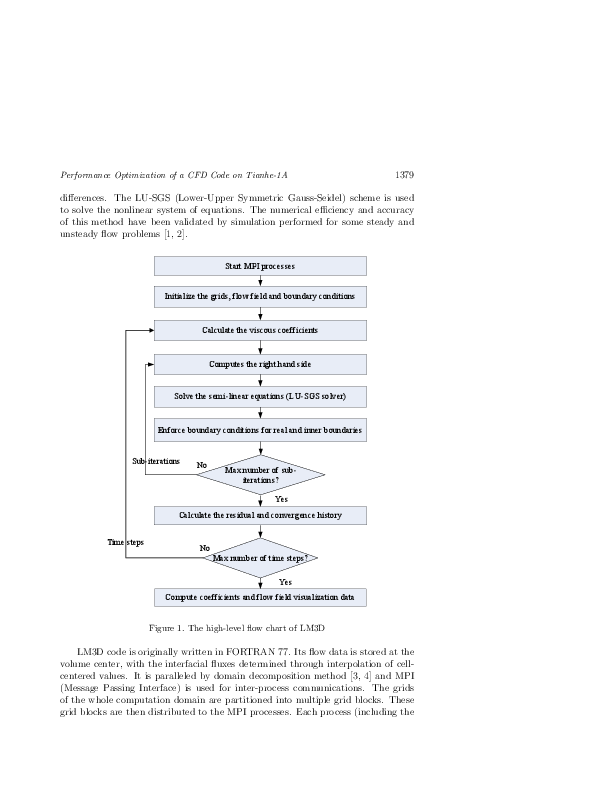Optimization of a Parallel CFD Code and Its Performance Evaluation on Tianhe-1A
keywords: Computational fluid dynamics, slightly compressible model, large-scale parallel computing, uniprocessor optimizations, in memory grid exchange, scalability, efficiency
This paper describes performance tuning experiences with a parallel CFD code to enhance its performance and flexibility on large scale parallel computers. The code solves the incompressible Navier-Stokes equations based on the novel Slightly Compressible Model on three-dimensional structure grids. High level loop transformations and argument based code specialization are utilized to optimize its uniprocessor performance. Static arrays are converted into dynamically allocated arrays to improve the flexibility. The grid generator is coupled with the flow solver so that they can exchange grid data in the memory. A detailed performance evaluation is performed. The results show that our uniprocessor optimizations improve the performance of the flow solver for 1.38 times to 3.93 times on Tianhe-1A supercomputer. In memory grid data exchange optimization speeds up the application startup time by nearly two magnitudes. The optimized code exhibits an excellent parallel scalability running realistic test cases. On 4 096 CPU cores, it achieves a strong scaling parallel efficiency of 77.39 % and a maximum performance of 4.01 Tflops.
mathematics subject classification 2000: 65Y05
reference: Vol. 33, 2014, No. 6, pp. 1377–1399


